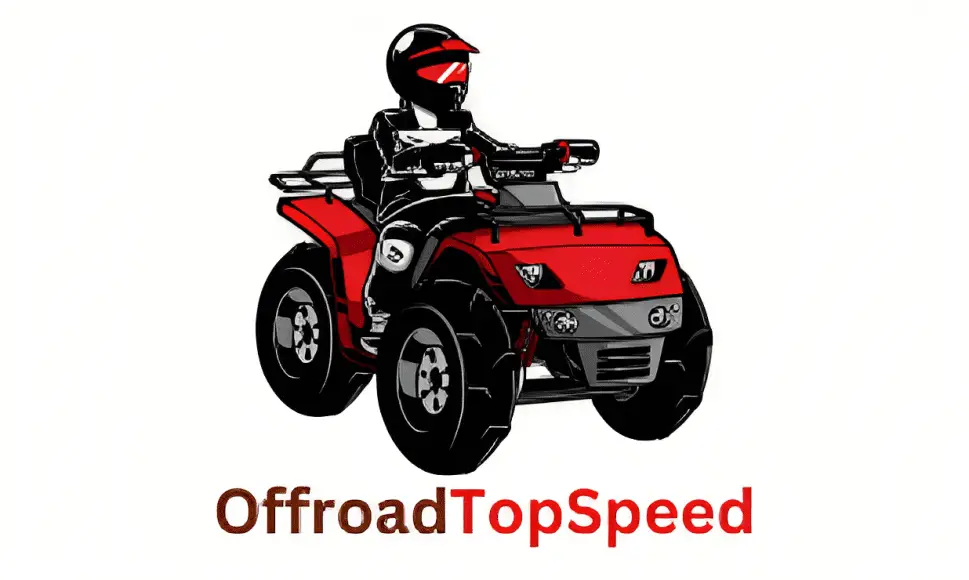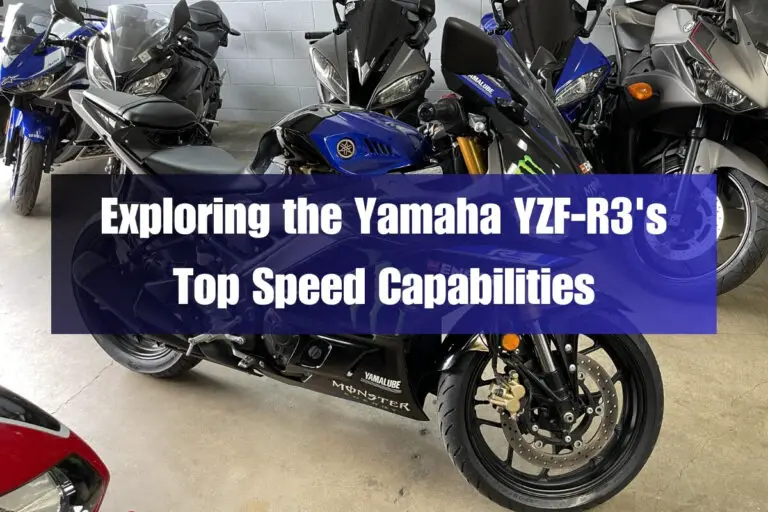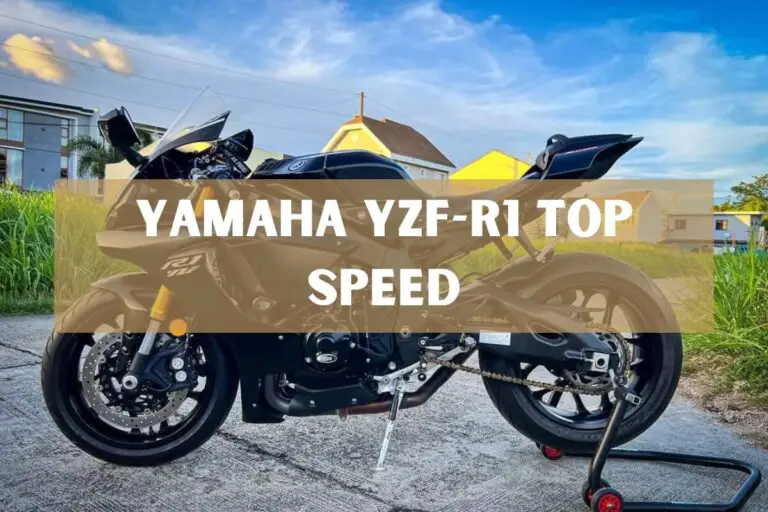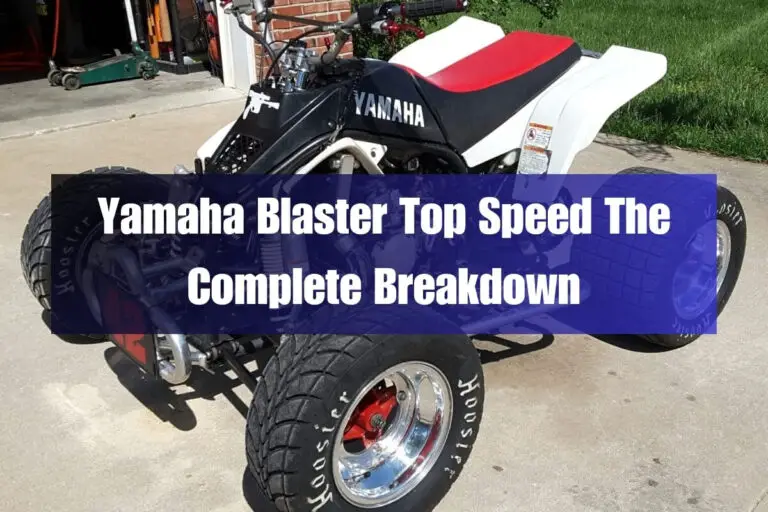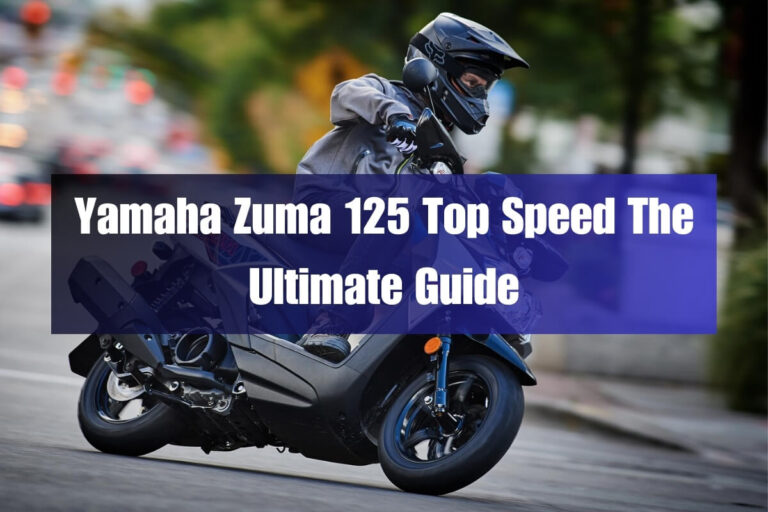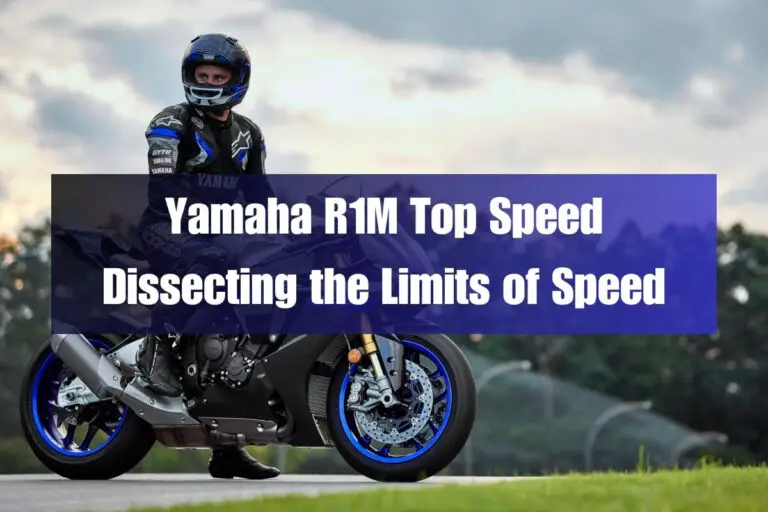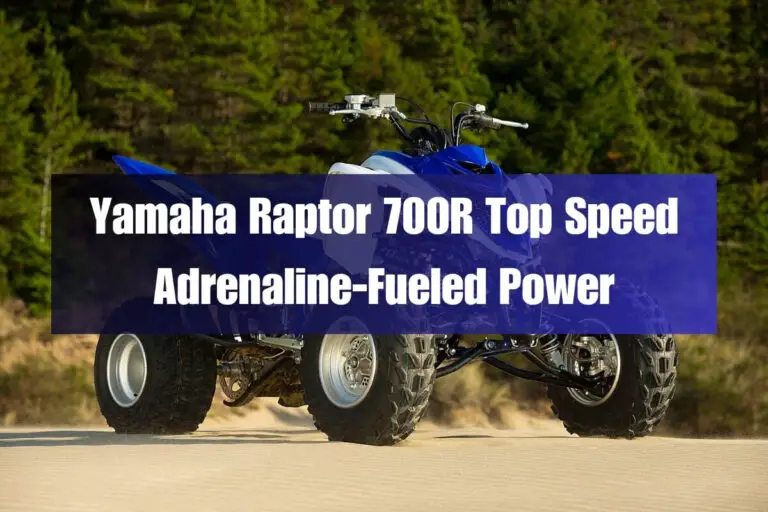Yamaha R7 Top Speed, Acceleration & Performance capabilities
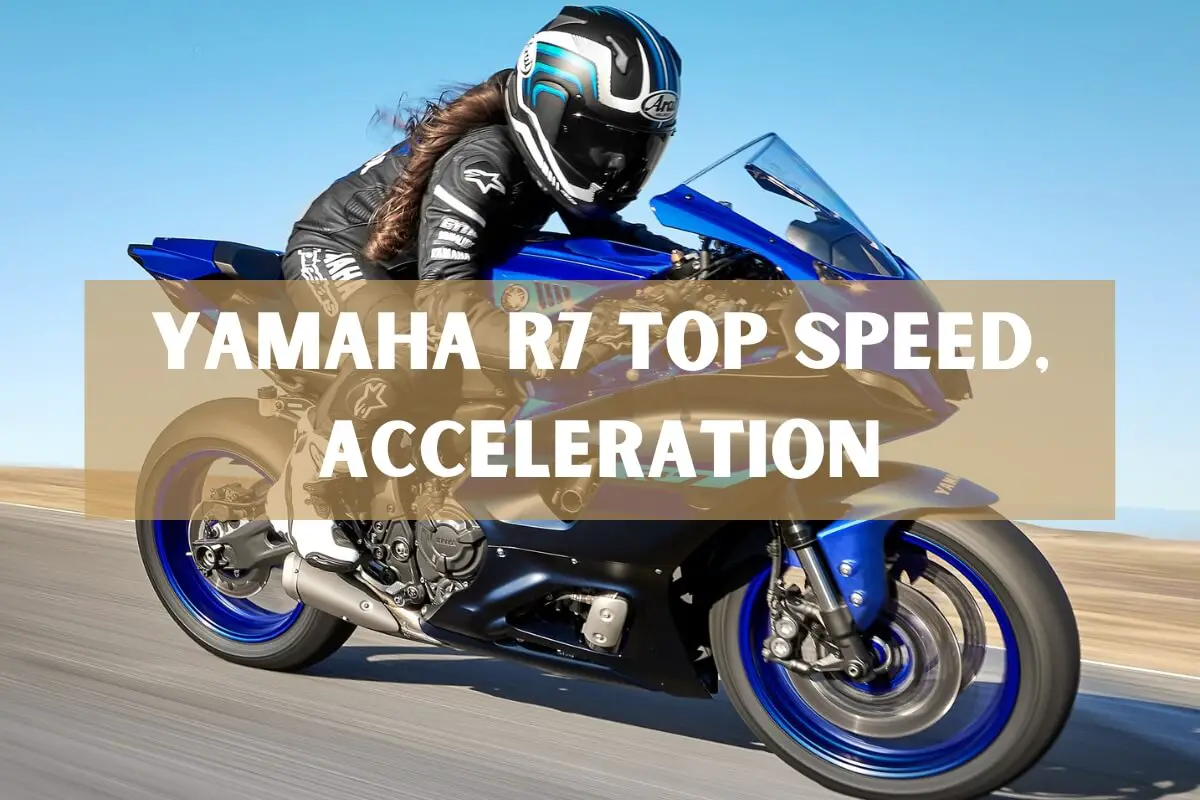
The 2023 Yamaha R7 sportbike stunned the motorcycling world when it debuted last year. With superbike rivaling power packed into a nimble chassis, riders wondered – just how fast can this thing really go?
The short answer is 139 mph at redline in top gear.
In this detailed review, we’ll break down the capabilities of Yamaha’s wickedly quick middleweight and look at:
- R7 engine performance and acceleration
- Factors impacting the bike’s top speed
- How the R7 compares to rivals
- Owner impressions and Yamaha R7 reviews
- Best modifications to make it faster
- Pros, cons, and alternatives
And more…
An Overview of Yamaha’s All-New R7 Supersport
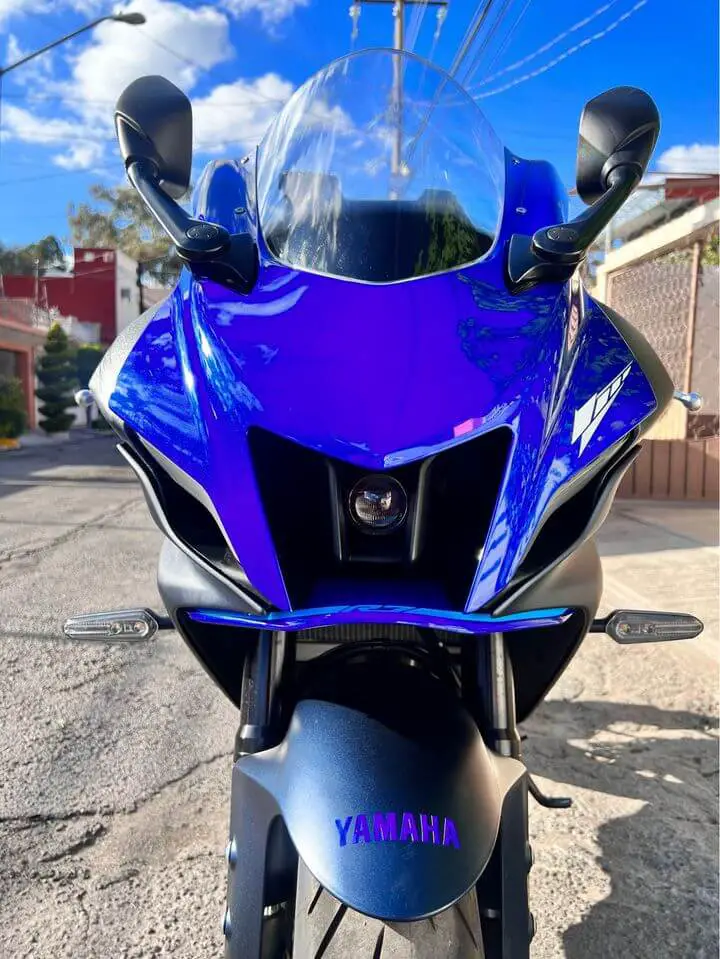
When Yamaha added the R7 to its legendary R-series lineup of race-bred machines, the motorcycle media took notice.
Designed as a step below the demanding Yamaha YZF-R6 supersport, the R7 delivers an exhilarating blend of engine performance, handling capabilities, and everyday rideability.
“The R7 gorgeous face is not only there for looks. An adaptive bi-functional LED headlight comes stock…” – CycleWorld
Key Specs and Features:
| Specification | Value |
|---|---|
| Engine Type | Liquid-cooled, 4-stroke, DOHC inline twin-cylinder; 4-valves per cylinder |
| Bore & Stroke | 80.0mm x 68.6mm |
| Compression Ratio | 11.5:1 |
| Displacement | 689cc |
| Fuel System | Fuel Injection |
| Transmission | 6-speed; multiplate wet clutch; with Assist & Slipper clutch |
| Final Drive | Chain |
| Front Suspension | Telescopic fork; adjustable for preload, rebound and compression |
| Rear Suspension | Linked-type Monocross rear shock, adjustable preload and rebound |
| Front Brake | Dual 298mm hydraulic disc |
| Rear Brake | 245mm hydraulic disc |
| Front Tire | 120/70ZR17 |
| Rear Tire | 80/55ZR17 |
| Rake | 23.7° |
| Trail | 3.5″ |
| Wheelbase | 54.9″ |
| Seat Height | 32.9″ |
| Fuel Capacity | 3.4 gallons |
| Wet Weight | 414 lbs |
| Colors | Team Yamaha Blue, Performance Black, Intensity White |
| MSRP | $9,199 |
Yamaha R7 Engine Performance and Acceleration
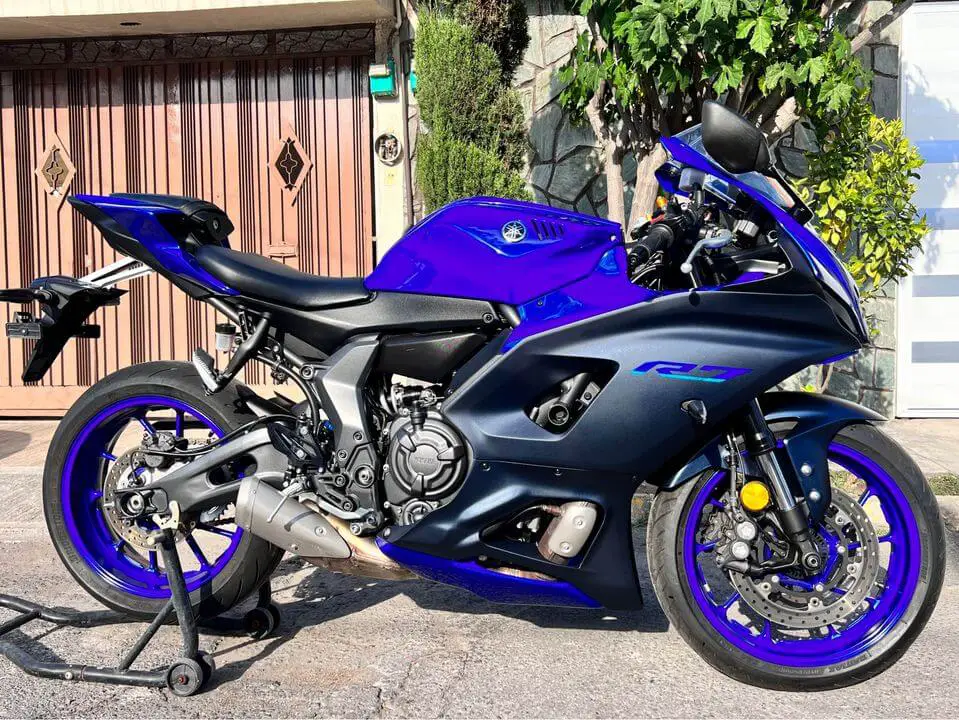
Powering the lightweight R7 supersport is an advanced 689cc inline twin cylinder engine with DOHC and 8 valves.
This smooth-revving motor utilizes Yamaha’s special ‘Crossplane Philosophy’ design with an uneven firing interval that enhances both power delivery and throttle control.
“Yamaha’s famous crossplane concept Inline 2-cylinder engine offers character and power beyond its capacity.” – MCN
Peak Horsepower and Torque Figures
Yamaha rates the maximum horsepower of the R7 at 72.1 hp at 8750 rpm.
Torque peaks at 49.4 lb⋅ft at 6500 rpm – placing more grunt lower in the rev range for strong real world power.
The 11,500 rpm redline allows the R7 motor to stretch its legs and reach thrilling speeds. Close-ratio 6-speed transmission ensures maximum acceleration through all gears.
Blazing Quick 0-60 MPH and 1/4 Mile Times
The new Yamaha R7’s top speed is 139 mph. It can accelerate from 0-60 mph in 3.27 seconds and 0-100 km/h in 3.43 seconds.
Sharp throttle response combined with an Assist & Slipper clutch enables clutchless upshifts for uninterrupted acceleration. The optional Quick Shift System further improves full-throttle upshifts.
Stand on the gas and the front wheel lifts off the tarmac as you rocket forward.
Yamaha R-Series Top Speed Comparison
| Model | Top Speed (km/h) |
|---|---|
| Yamaha YZF-R7 | 224 km/h (139 mph) |
| Yamaha YZF-R6 | 259 km/h (161.5 mph) |
What Determines the Yamaha R7’s Top Speed?
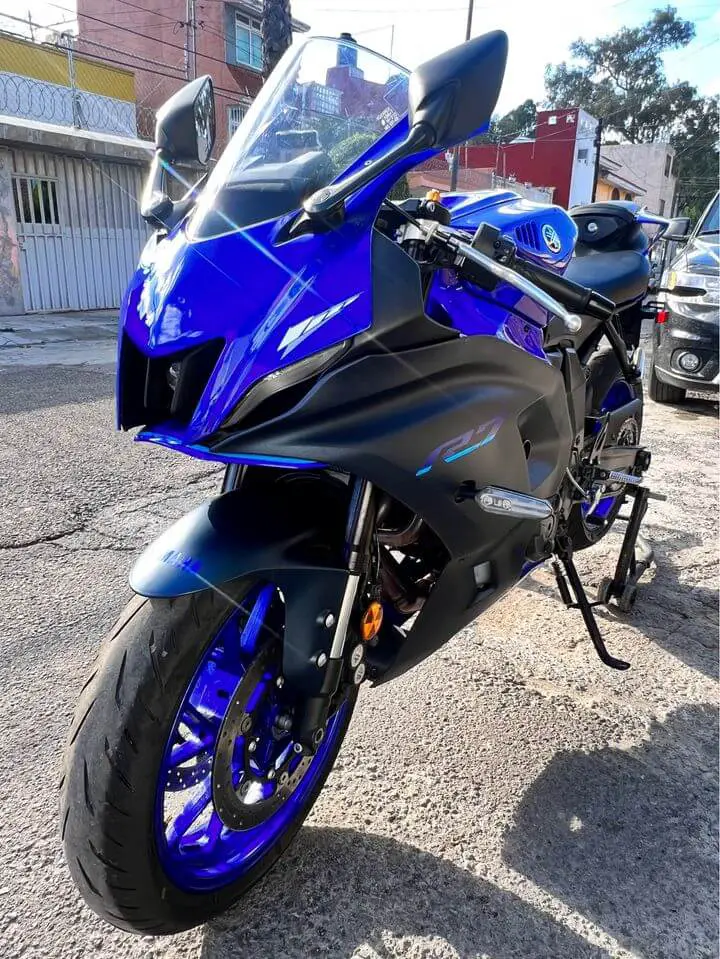
While quarter mile sprints demonstrate the R7’s rapid acceleration, what allows this middleweight to reach into the high 130 mph range at top speed?
Several key factors impact motorcycle top velocity, including:
Engine Horsepower & Gear Ratios
Having adequate horsepower to overcome wind resistance at high speeds is crucial. The R7’s 100+ hp rivals outperform heavier cruisers.
And the transmission must have properly spaced gear ratios to keep the engine in its powerband as speeds increase.
“The R7 oozes easy supersport performance potential, rocketing to 100mph in the blink of an eye.” – Bennetts
Aerodynamics & Rider Positioning
The shape of the bike and rider positioning are also important aero factors. The R7’s front fairing and windscreen divert airflow at speed while the sportbike riding posture cuts through the wind.
Weight Savings
Weighing just 188 kg fueled up, the lightweight R7 has less mass to accelerate and allows quicker direction changes. This nimble handling also aids high speed stability.
The R7 strikes an ideal balance between horsepower, gearing, aerodynamics and lightweight. Allowing confident riders to fully exploit its 139 mph top end on closed tracks or long straightaways.
How Does the R7’s Top Speed Compare?
The newest generation supersports like the Kawasaki Ninja ZX-6R or Suzuki GSX-R600 will outrun the R7 at their ~155-160 mph top speeds. But their peaky powerbands and uncompromising ergonomics limit everyday rideability.
Overall the R7 provides liter-bike rivaling acceleration while maintaining useable power delivery and a balanced supersport chassis. Claiming a top speed crown in the competitive middleweight category.
Chassis Design and Handling Capabilities
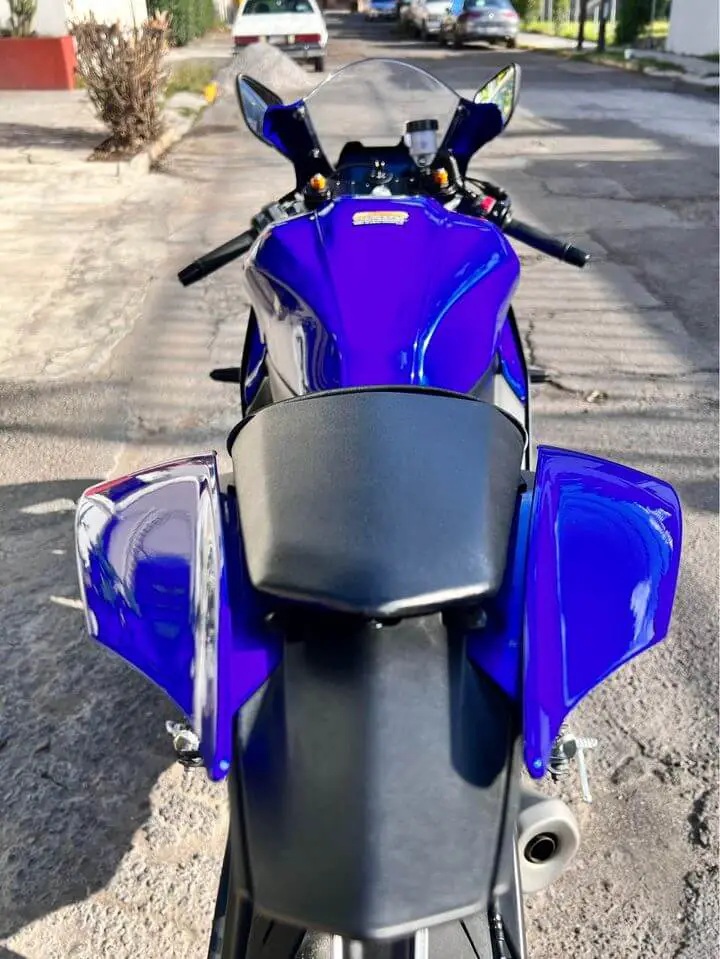
A rigid aluminum Diamond frame and swingarm provide an optimal balance of strength and flex characteristics to absorb impacts while offering precise handling feedback.
Fully adjustable inverted KYB 41 mm front forks feature optimized spring rates and damping settings for linear responsiveness. The link-type rear shock handles fast transitions from smooth pavement to uneven surfaces.
“The R7 carves corners with the stability and precision of a much bigger bike.” – Motorcycle.com
Confident straight line stability allows the R7 to reach its top speed, while nimble steering and mid-corner composure provides thrilling cornering capabilities.
Sporty Riding Position for Control and Comfort
While not as extreme as an R6, the R7 riding position enhances control and performance:
- Clip-on handlebars place hands low and forward
- Rearset footpegs allow shifting bodyweight for quick turn-ins
- Deep knee pockets nestle the rider during hard braking
This sporty yet natural ergo triangle enables spirited everyday rides without undue strain. Finding an excellent balance not always achieved in the class.
Owner Impressions – Rave Yamaha R7 Reviews
Yamaha R7 reviews from owners are overwhelmingly positive. Citing the bikes supremely capable engine, eager handling, and surprising flexibility.
“The Yamaha R7 is a wolf in sheep’s clothing. Its comfortable ergonomics and flexible engine belie its sporting intentions.” – R7 Owner Review on MCN
High owner ratings praise the R7’s combination of thrilling track-ready performance and approachable everyday manners:
“The R7 continues the R-series tradition of delivering a MotoGP-bred supersport experience in a package made for real world roads.” – YamahaR7.net Owner’s Forum
Of course no bike is perfect. A few owners note the tall seat height can be problematic for shorter riders. And wind protection is limited at higher speeds.
But most agree the all-new R7 hits a sweet spot between focused supersport machines with peaky powerbands, and mild-mannered standards lacking aggressive performance.
Best Modifications to Make the Yamaha R7 Faster
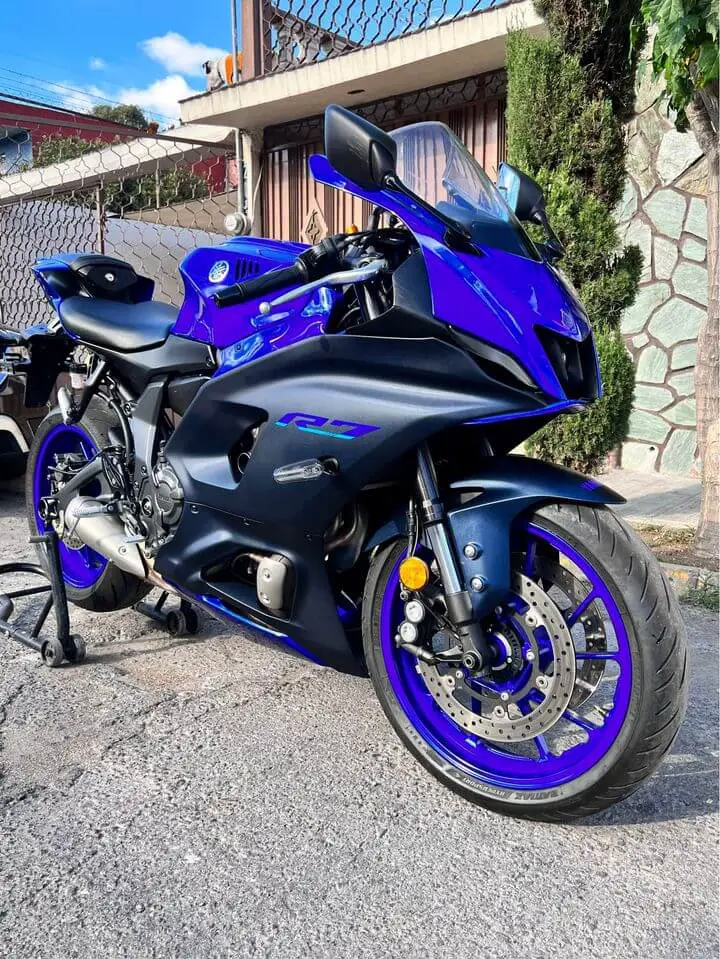
While the stock R7 impresses owners with its acceleration and high speed stability – here are 3 common ways to extract even more performance:
1. Install a Full Exhaust System
Aftermarket mufflers reduce weight while allowing freer breathing for more usable power across the entire rev range. Expect 3-5 additional horses up top.
2. Tune the ECU
Optimizing fueling and ignition timing maps to match the intake and exhaust gains can release “hidden” performance left on the table from the factory.
3. Adjust Power Commander
Adds the ability to digitally modify fuel mixture and throttle response for peak output. Especially helpful when installing air filters or engine parts.
Of course tire selection, brake pads, and ergonomic adjustments allow customizing the R7 for your ideal set up. But the above quick-spool mods offer some of the biggest speed increases to transform the R7 into a canyon-carving beast.
Yamaha R7 – Pros and Cons
Pros
- Linear power build up and usable mid-range
- Confidence inspiring high speed stability
- Superbly balanced chassis and suspension
- Surprising versatility for street and track days
- Excellent value at $9,199 MSRP
Cons
- Smaller fuel tank limits range
- Minimal wind protection
- Tall seat and rearsets prove difficult for some riders
For many enthusiasts, the R7’s strengths in delivering approachable supersport performance outweigh minor shortcomings in everyday practicality.
Alternatives to Consider
If the peaky nature or limited streetability has you considering alternatives, here are two to consider:
Aprilia RS 660
Aprilia’s acclaimed RS 660 pairs sharp handling with a smooth twin pumping out 100 horsepower – rivaling larger four cylinders on power. The Italian exotica commands a premium $11,499 price tag however.
Kawasaki Ninja 1000SX
This comfortable sport-tourer conceals 140 horsepower allowing a 155 mph top speed. A half-fairing provides some wind protection and hard saddlebags add touring utility. At $13,199 the 1000SX costs substantially more than the R7 however.
For riders seeking lightweight supersport performance on a middleweight budget – the new Yamaha YZF-R7 stands clearly ahead.
Frequently Asked Questions About the Yamaha R7
What is the Yamaha R7’s 0-60 mph time?
The 2023 Yamaha R7 accelerates from 0-60 mph in just 3.27 seconds with its 689cc inline twin cylinder engine.
What is the price of the 2023 Yamaha R7?
The latest Yamaha R7 retails for $9,199 USD brand new. Making it a performance bargain in the middleweight category.
What is the top speed of the R7 with the limiter removed?
Yamaha does not recommend removing the factory speed limiter. But some owners estimate the R7 may reach over 178 mph without restriction. However high speeds can be extremely dangerous on public roads.
Does the R7 have a quickshifter for clutchless upshifts?
Yes, the 2023 R7 offers an optional Quick Shift System that allows for smooth full-throttle upshifts without using the clutch. This helps accelerate through gears even quicker.
Conclusion – How fast can the new Yamaha R7 truly go?
Yamaha shakes up the middleweight category by infusing R-series DNA into the all-new R7. Combining a smooth and powerful 689cc twin with a featherweight chassis to create a motorcycle that punches far above its displacement figure.
Accelerating from 0-60 mph in 3.27 seconds with seamless power delivery through redline, riders can exploit the R7’s 139 mph top speed given enough road or track. All while carving corners with nimble precision.
While the dedicated R6 or liter-class R1 remain the tools of choice for expert track day junkies. The balanced ergonomics and flexible powerband of the Yamaha R7 opens superbike levels of performance to mere mortals.
After reviewing acceleration, top speed capabilities, owner impressions, and alternatives – the 2023 Yamaha YZF-R7 stands clearly ahead of rivals. Delivering uncompromising supersport capabilities evolved for real world roads.
